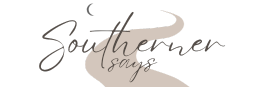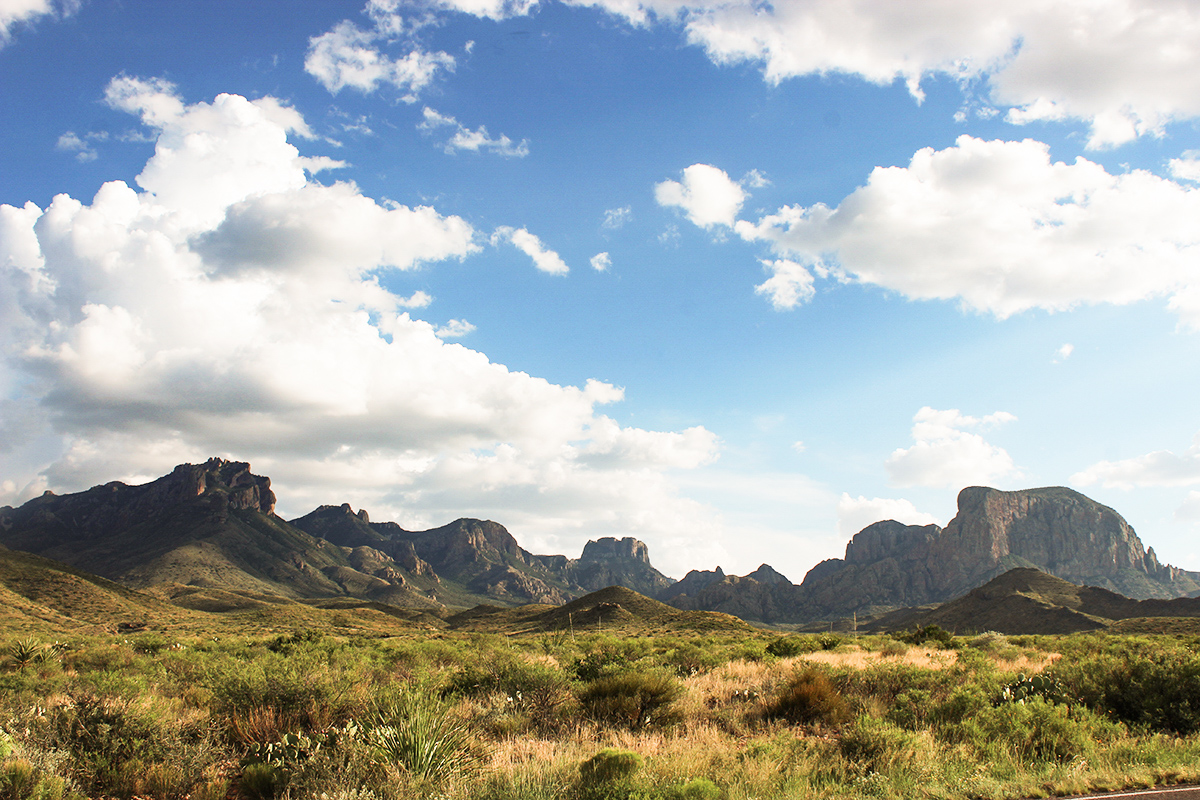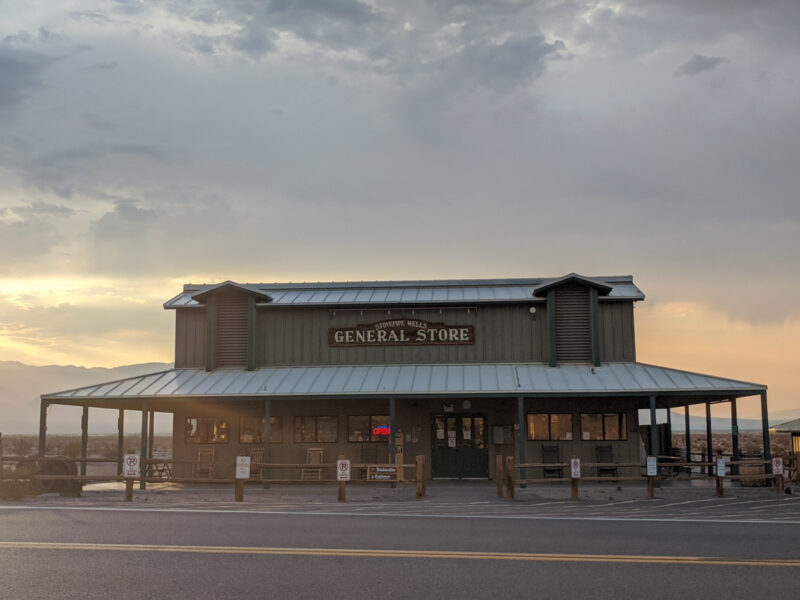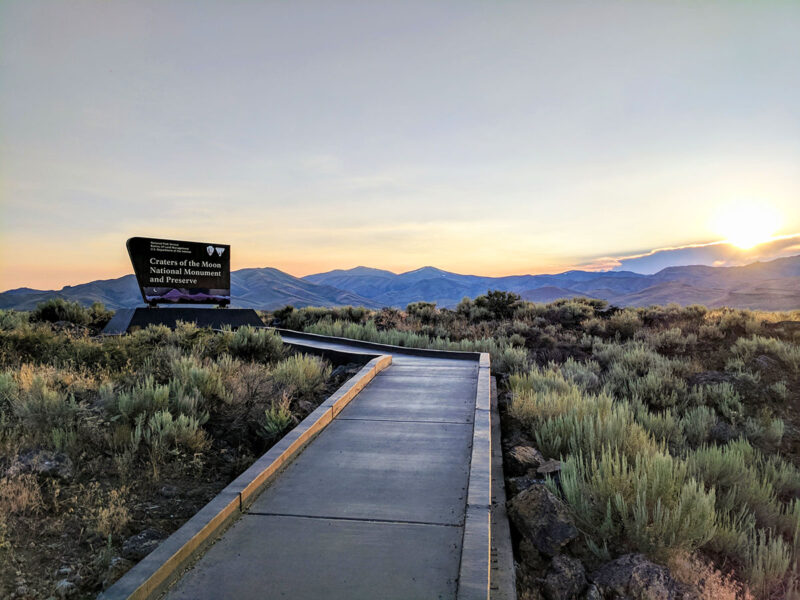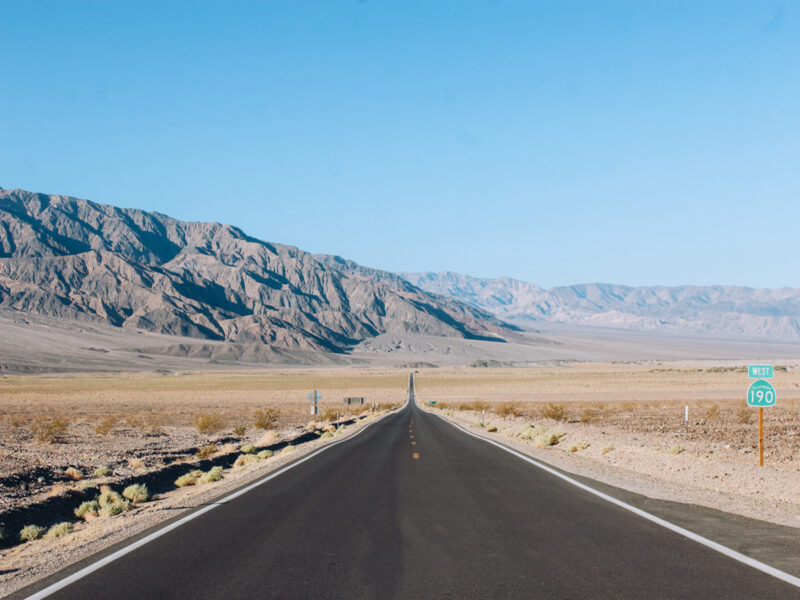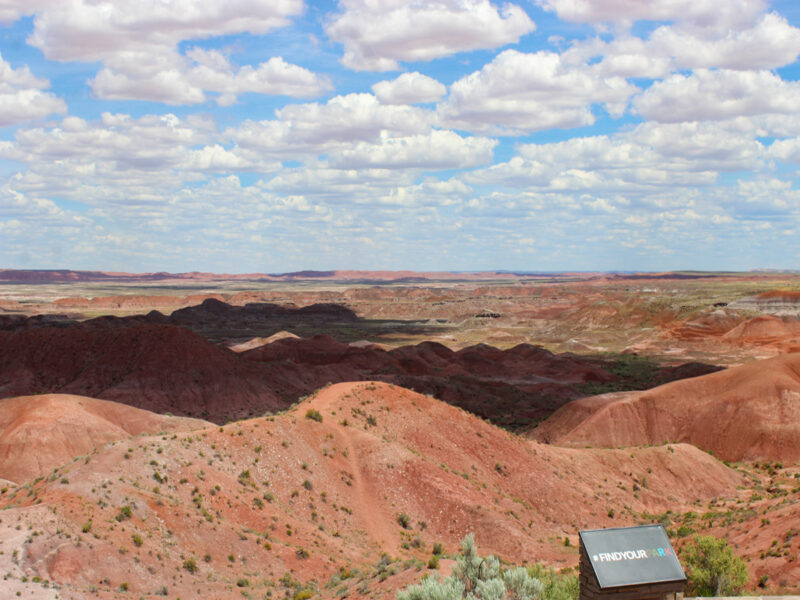Guide to Visiting Big Bend National Park Park
In a remote desert with rivers, mountains, canyons and wildlife, visiting Big Bend National Park might seem a bit overwhelming just because of its location. Getting there takes effort. Couple that with the fact that it’s really hot most of the year and you might be hesitant to visit Big Bend. But you shouldn’t be. With good planning, visiting Big Bend National Park – in summer even – can be done. Here’s a few tips to help you plan your trip.
This article contains affiliate links. That means I may earn a commission, at no extra fee to you, if you book or buy something from a link I provide. This helps keep Southerner Says online and on the road. Thank you for the support!
What Makes Big Bend Special?
Big Bend National Park is unique national park. Here’s just a few of the reasons it’s so special.
Size
Big Bend is huge! It’s the 15th largest of all national parks with over 801k acres to explore. That’s bigger than the state of Rhode Island. Since it’s a lesser visited park, there’s plenty of room to move around and not feel crowded.
Mountains
The Chisos Mountains – the southernmost mountain range in the United States – are fully contained within the boundaries of the park. There is no other National Park that has that unique distinction.
Wildlife
One of the park’s greatest achievements has been the return of the Mexican Black Bear. Absent for years, they have recently begun to be spotted again in the mountains.
The NPS has worked hard to reintroduce the bears into Big Bend National Park. Don’t sabotage their hard work by feeding the bears deliberately or by accidently leaving food out. Campgrounds have bear boxes that should be used. To protect yourself and the bears, the NPS has some good info about bear safety in the park that’s a must read before you plan on visiting
Dark Skies
Big Bend National Park is an International Dark Sky Park. Not only does it have the darkest skies measured in the lower 48, it’s also the largest International Dark Sky Park to date.
Unique Geology
The park has three large Canyons that have been carved by time and the Rio Grande River. The canyons make up the Rio Grande Wild + Scenic River (RIGR) park unit.
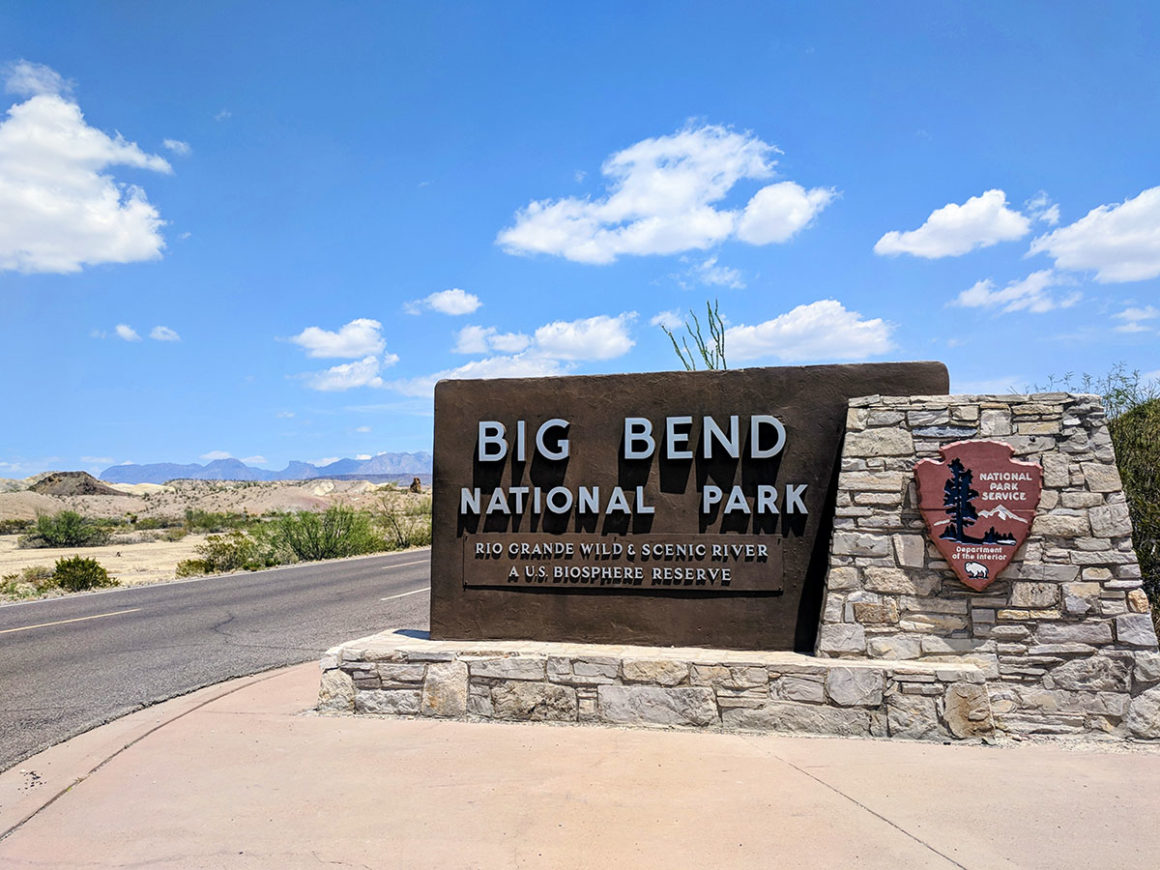
Where is Big Bend National Park?
Big Bend National Park is located in the Chihuahuan Desert in southwest Texas. It lies along the Rio Grande River, that forms the border between the the United States and Mexico. The National Park Service takes care of approximately 118 miles along the border. Because Big Bend National Park is so far south, it’s not the easiest park to get to but very much worth the effort.
How to Get to Big Bend National Park
If you are considering doing a fly and drive trip to Big Bend National Park, the closest airport is Midland International Air (MAF) in Midland, Texas, 195 miles away. The next closest, commercial airport is El Paso International Airport (ELP), 300 miles from the park. Other possible Texas cities for a fly and drive road trip to Big Bend would be:
- San Antonio, TX (SAN) – 400 miles
- Austin, TX (AUS) – 435 miles
- Dallas, TX (DFW) – 533 miles
- Albuquerque, NM (ABQ) – 520 miles
Road Tripping Big Bend National Park
Our trip to Big Bend National Park was part of a longer road trip that included White Sands National Park in New Mexico and Guadalupe Mountains National Park in Texas. Coming from the northwest, we drove US Route 90 from Van Horn, TX to Alpine, TX and entered Big Bend from the northwest entrance station on Texas State Highway 118.
If you have the time, you could also leave I-10 at exit 176 in Kent and drive the full length of Texas State Highway 118, which is part of the larger Texas Mountain Trail route.
For an even better scenic route, if you are coming from Marfa, make a turn on Hwy 67. This road goes to Presidio where you can drive Texas 170 or the “River Road”. This roadway is a 120 miles scenic road that passes north along the Rio Grande and takes you through Big Bend Ranch State Park and the ghost town of Terlingua.
For the fastest route, most people driving to Big Bend National Park will use Interstate 10 to US Route 90, and enter the park on Texas State Highway 118 from Alpine or US Route 385 from Marathon.
Southerner Says: Texas is big, with plenty of very remote roads. Take my advice and buy gas when you can. There are two gas stations inside the park. One at Panther Junction and one at the Rio Grande Village. Even though you can buy gas inside the park, it’s a good idea to stop in Terlingua or Marathon and fill up before you go into the park.
How to use this Google map: in the top left corner of the map is a button with an arrow. Click that and it shows the different layers of the map. You can also add the map to your Google account so you will have it for the future, by clicking the star next to the title.
When’s the Best Time to Visit Big Bend National Park?
The Big Bend National Park busy season is November through mid April. March is especially busy because of spring break vacations in Texas. If you don’t mind hotter temperatures, then summer and early fall are the best times to avoid crowds. We visited in June when temperatures were already over 100 F. Even though it was hot, the almost non existent amount of people there, was perfect for exploring. At times, we felt like we were the only ones in the park.
Things To Do in Big Bend National Park
Big Bend National Park has so many things to do. Here’s a sampling of them.
Visitor Centers
There are five Visitors Centers in the park. Panther Junction and Chisos Basin are open year round. Panther Junction Visitor Center has WiFi, a water filling station and a wonderful movie about the history of the park.
The other visitor centers are Castolon Visitor Center, Persimmon Gap Visitor Center and Rio Grande Visitor Center. In low season, if an entrance station is unmanned, stop by one of the Visitor Centers for a park map.
Southerner Says: check NPS.gov for up to date info and visitor center closures and hours.
Ross Maxwell Scenic Drive
When visiting Big Bend National Park, don’t miss Ross Maxwell Scenic Drive. This is a great opportunity to see the park if you don’t have much time. Ross Maxwell is a paved scenic drive starts at the Santa Elena Castolon Junction and ends at Santa Elena Canyon.
The drive is a 30 mile route that takes you through the Castolon Historic area to Santa Elena Canyon. There are plenty of stops and overlooks along the way, in addition to the Castolon Visitor Center, don’t miss the Sotol Vista Overlook. As you make your way towards Santa Elena Canyon, notice the canyon in the distance. What first appears as a small slit in the rocks gets bigger and bigger the closer you get.
You can add more to your route by driving Old Maverick Road – a 13 mile unpaved road that will bring you back onto Texas State Highway 118.

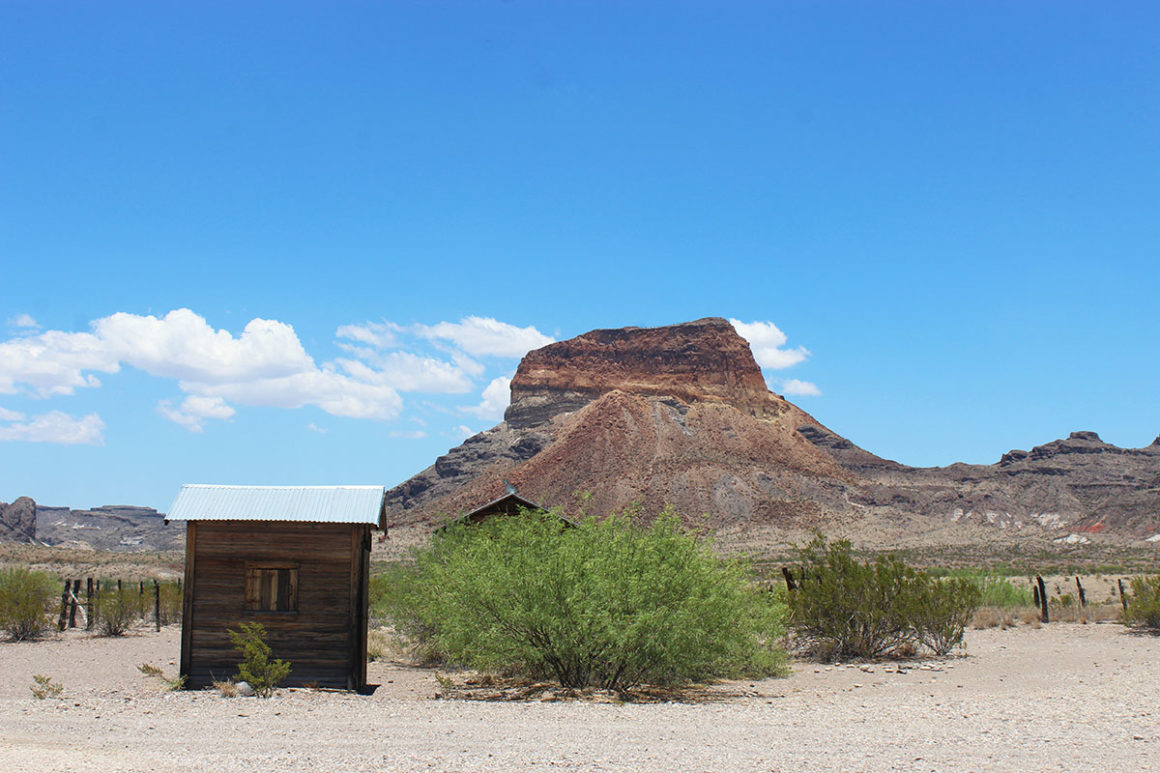
Fossils
Did you know that dinosaurs once roamed what is now Texas? That’s right. This part of the country was once covered by a shallow sea that was home to all kinds of creatures. In fact, some of the most important fossils that have been found in the United States have come from Texas.
Big Bend National Park has plenty of information and exhibits about the dinosaurs that inhabited in Texas. Eight miles north of Panther Junction on Hwy 385 is the Fossil Discovery Exhibit. Here, kids – both big and small – can walk among replicas of fossils and find out more about them from interpretive info in this interactive museum. There’s also a play area and bathrooms.
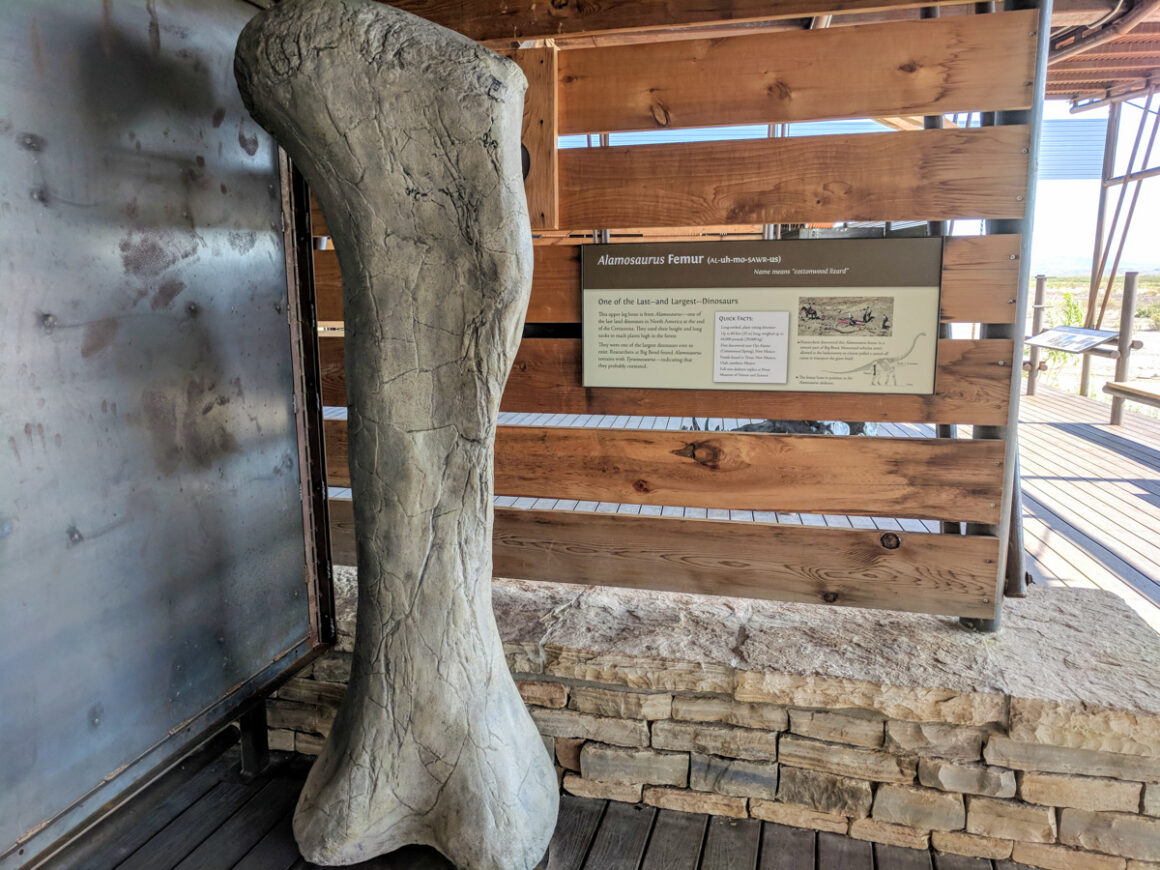
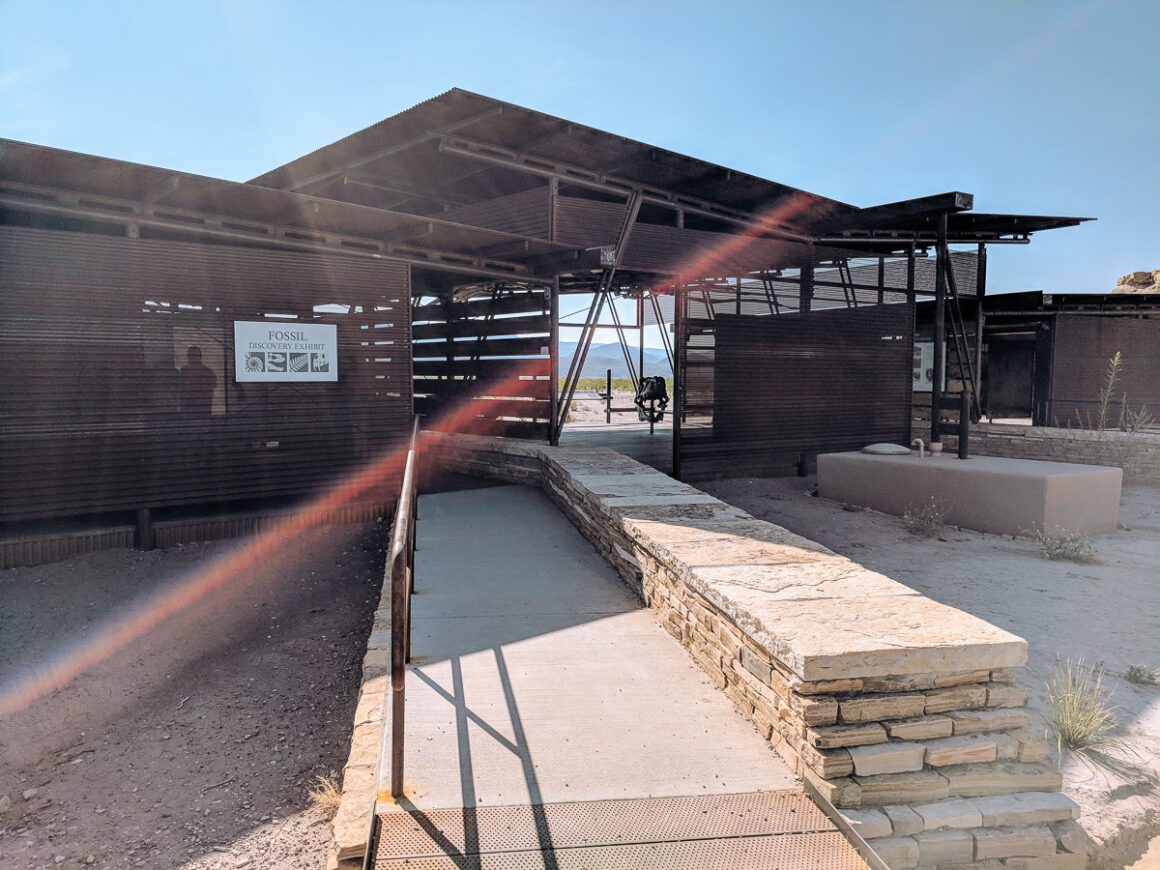
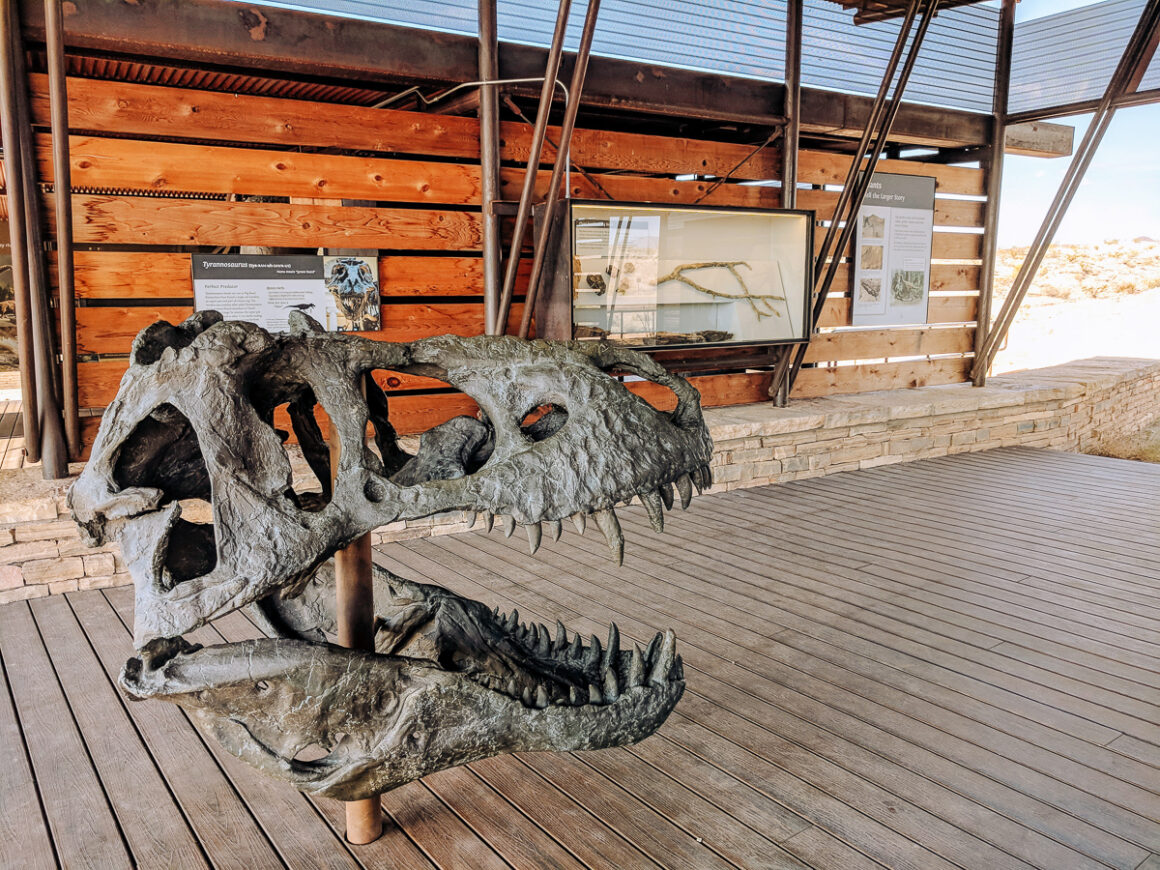
Visit Mexico
Visiting Big Bend National Park gives you a unique chance to visit Mexico. The small town of Boquillas del Carmen is right across the Rio Grande from the park and as long as you remember to bring your passport, you can check it out in person.
At the Boquillas port of entry, there’s a boat that will take you across the river. Once on the other side, you can either walk or ride a burro into town. There are restaurants and shopping to enjoy. The port of entry is open Wednesday through Saturday in high season and only on weekends during low season.
Hiking in Big Bend
With over 150 miles of hiking trails, there’s a hiking trail for everyone and any skill level in Big Bend National Park. Some of favorites are:
- Boquillas Canyon Trail – an easy 1.2 mile trail that takes you up and over some hills along the Rio Grande. It has unbelievable wide open views into Mexico that make you feel small.
- Santa Elena Canyon Trail – an easy 1.7 mile trail that takes you into the canyon. Even if you don’t do the whole thing, the area before you get to the overlook and trail is fun to explore. There picnic tables and trails along the river.
- Hot Springs Trail – easy .5 mile round trip. There is also a one mile loop that continues on the to bluff above the trail.
If you are visiting Big Bend National Park in summer, it’s best to plan on hiking early or in the late evening because of the heat and humidity. Also have plenty of water and keep an eye on the weather. There were some bad pop-up thunderstorms one evening that forced us to leave our campsite because of the lightening. I would not have wanted to be on a trail during that storm.

Kayak
Big Bend National Park’s location on the Rio Grande gives visitors the unique opportunity to float the river. Taking a tour of the Rio Grande will be one of the first things I do next time I’m in Big Bend National Park. There are even overnight river trips. Fyi, If you do visit during the summer months the river might be too low to float and many of the river outfitters take the month of June off after a busy spring season.
Birding
Big Bend National Park is home to over 100 species of bird. Spring is the best time for bird watching but there are other good months when particular popular species are migrating.
Dark Skies
Since Big Bend National park is fairly far away from any big cities, the park has been named a Dark Sky Park. In fact, it actually has the least amount of light pollution of any national park in the lower 48 states.
There are ranger led night sky programs ad events throughout the year. These programs include moonlight walks and star parties. Unfortunately when we were there it was a full moon and there were very few stars that we could see.

Where to Stay in Big Bend National Park
Big Bend National Park is so large, plan on driving a lot just to see it all. The best way to make the best use of your time, is by staying inside the park or at least as close to it as you can. I recommend camping but if you aren’t a camper, Terlingua Study Butte has a couple of resorts and smaller motels.
Inside the park, is a park lodge (currently closed) and four developed campgrounds. Additionally, there’s permit only, backcountry camping available for those who really want a dispersed camping experience. More info about camping and lodging in the park can be found in my Where to Camp in Big Bend National Park article. It has details and tips about all the campgrounds in Big Bend National Park.
A Few Camping Tips For Big Bend
If you plan on camping and cooking your own food then it’s best to bring supplies and groceries with you. There are three camp stores in the park. Rio Grande Village, Chisos Basin and Castolon have a few supplies but they are limited on what they have and they aren’t open year round. In Terlingua, there is a general store that has some supplies now.
FAQ’s About Big Bend National Park
- How much does Big Bend National Park cost?
The fee for Big Bend National Park is $30 per car, $25 per motorcycle for 7 days. If you haven’t already, consider purchasing an America the Beautiful Park Pass that cost $80, is good for a year and gets you into over 2k interagency park units.
- How many days to you need in Big Bend National Park?
As many as you have. There is so much to see and do in this park and since it’s a long Texas way down there you want to take advantage of the time you spent getting there. However, you could see a few top things in two days. Three days would be better and I don’t think a five days to a week is too much. We spent two days and two nights and missed a lot.
- Will I have cell service in Big Bend?
Probably not. Cellular service was almost non existent when we were there but they were installing a new tower so I really can’t say how it is now.
- Are dogs allowed in Big Bend National Park?
Dogs are not allowed on trails in Big Bend or in the backcountry. Basically dogs can only go where your vehicle goes. So roads, developed campgrounds and primitive campsites.
- Is Big Bend National Park safe?
Big Bend is as safe as any other national park, considering you are outside and dealing with wildlife and a wild environment. Use common sense. If you are traveling solo, let someone know where you are. Check in with your campground host or rangers to check status of happenings in the park if you have a concern.
- Is visiting Big Bend National Park worth it?
Absolutely!
What Else is There to do Around Big Bend
West Texas is excellent for road tripping. While you are in the area, check out the ghost town at Terlingua Study Butte. Big Bend Ranch State Park is about 80 miles from the national park. Valentine, Marfa, Alpine and Marathon are all cool, quirky Texas towns worth stopping for. Visit Prada Marfa or try to see the mysterious Marfa lights. The wild west town of Fort Stockton is just 99 miles north of Big Bend.
Big Bend National Park Summer Packing List
- shorts + short sleeve shirts
- sunscreen
- appropriate food wear
- swimsuits and towels
- sunglasses
- water (there is water in the park for refills)
- hand sanitizer + soap
Other Resources For Big Bend National Park
- Big Bend National Park map from NPS.gov
- There is a audio tour guide mobile app for Big Bend. I haven’t used it so I can’t say if it’s helpful or not. If you have used it please let me know in the comments.
- Lonely Planet Texas includes a section on Big Bend.
- Nevada Barr Borderline if you enjoy reading books about the areas you are traveling to, check out this mystery fiction book set in Big Bend National Park.
- Always remember to use Leave No Trace principles when you visit public lands



